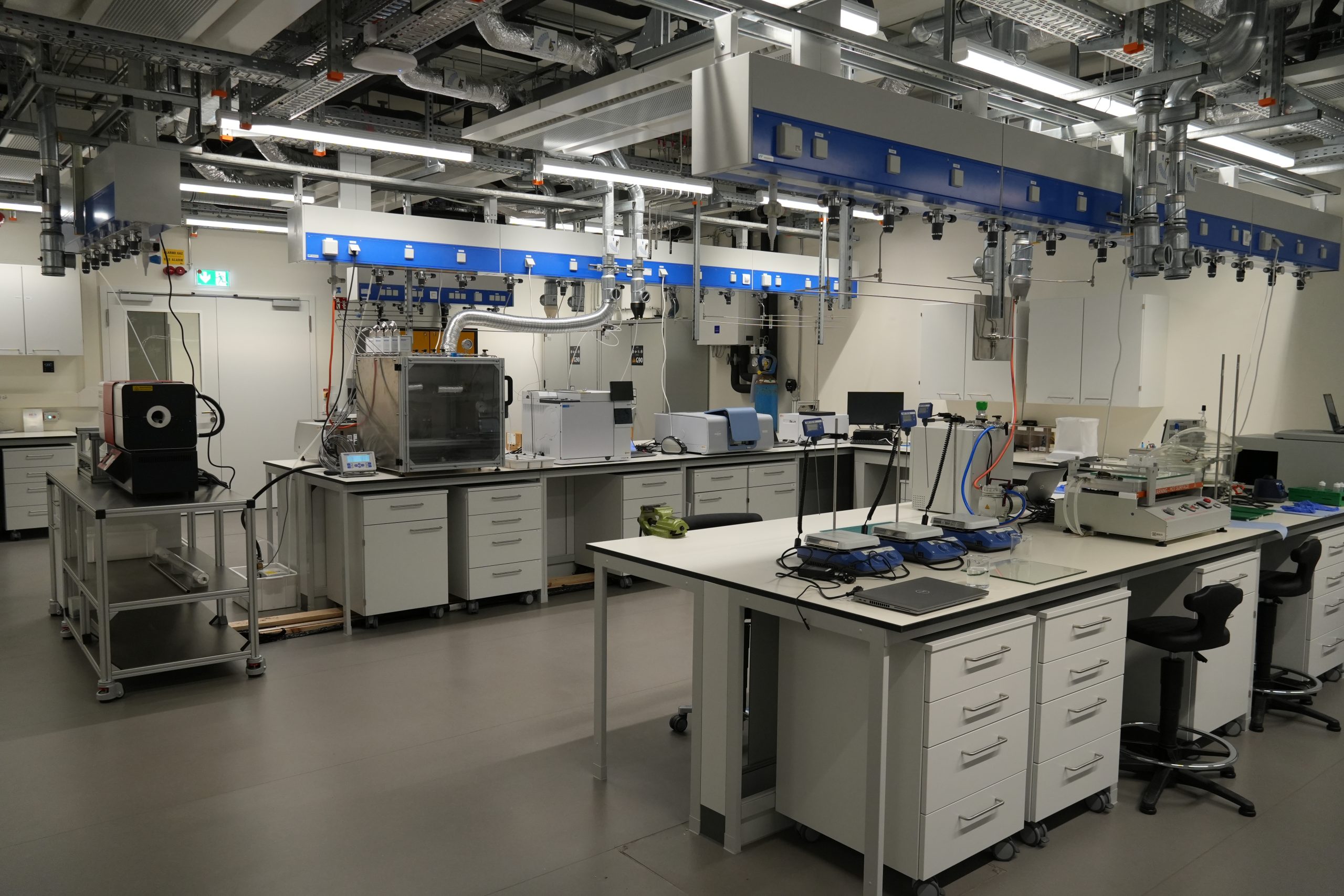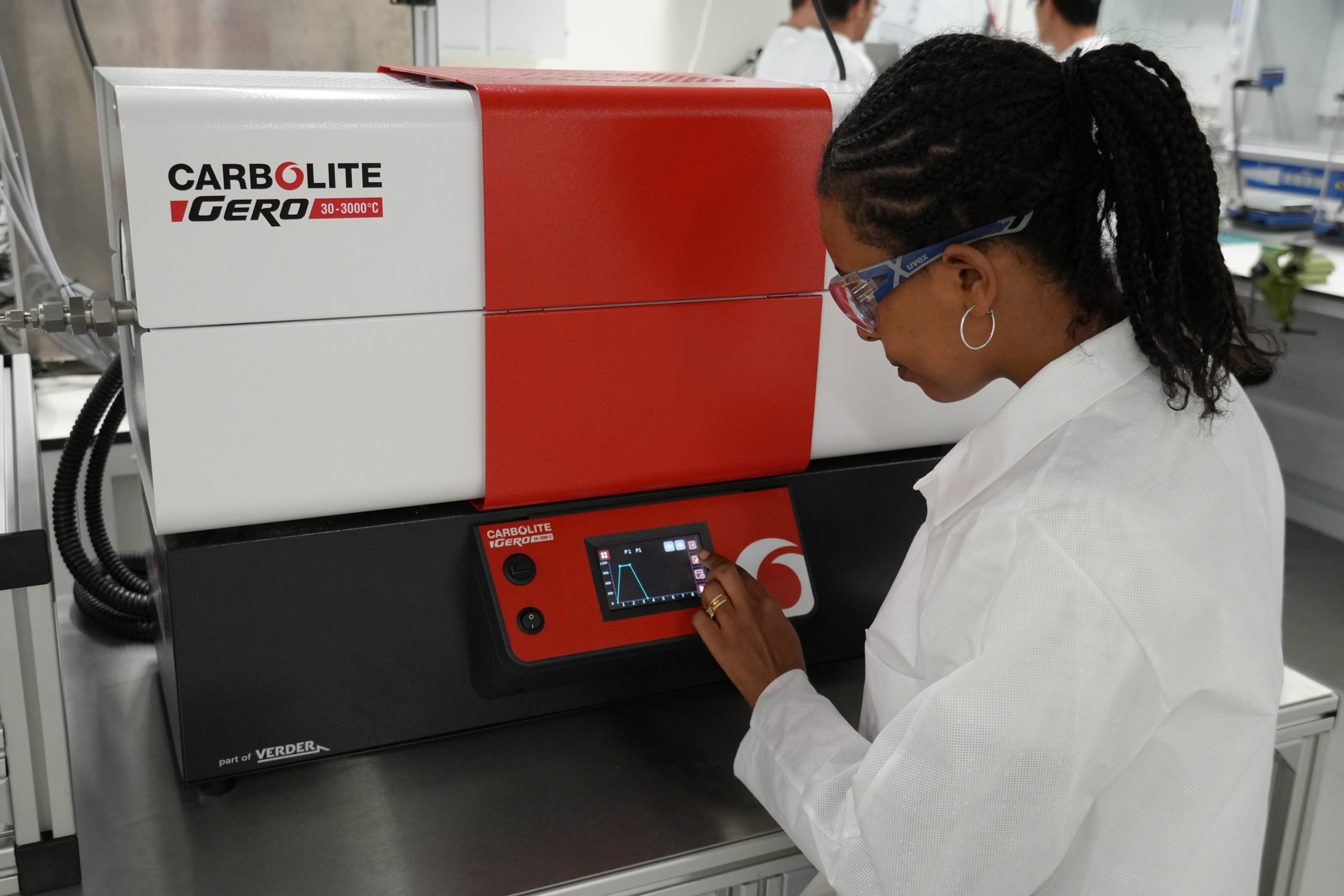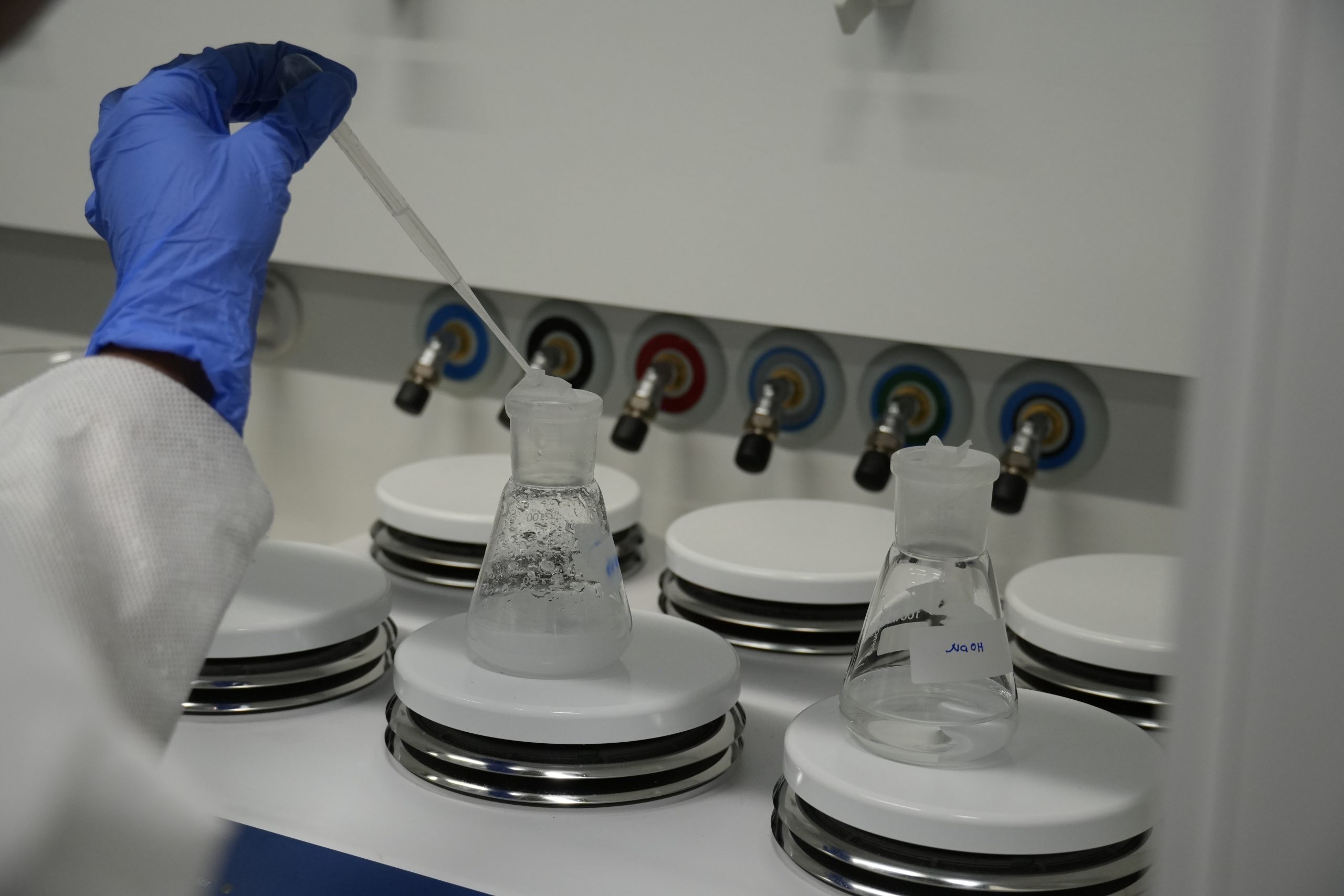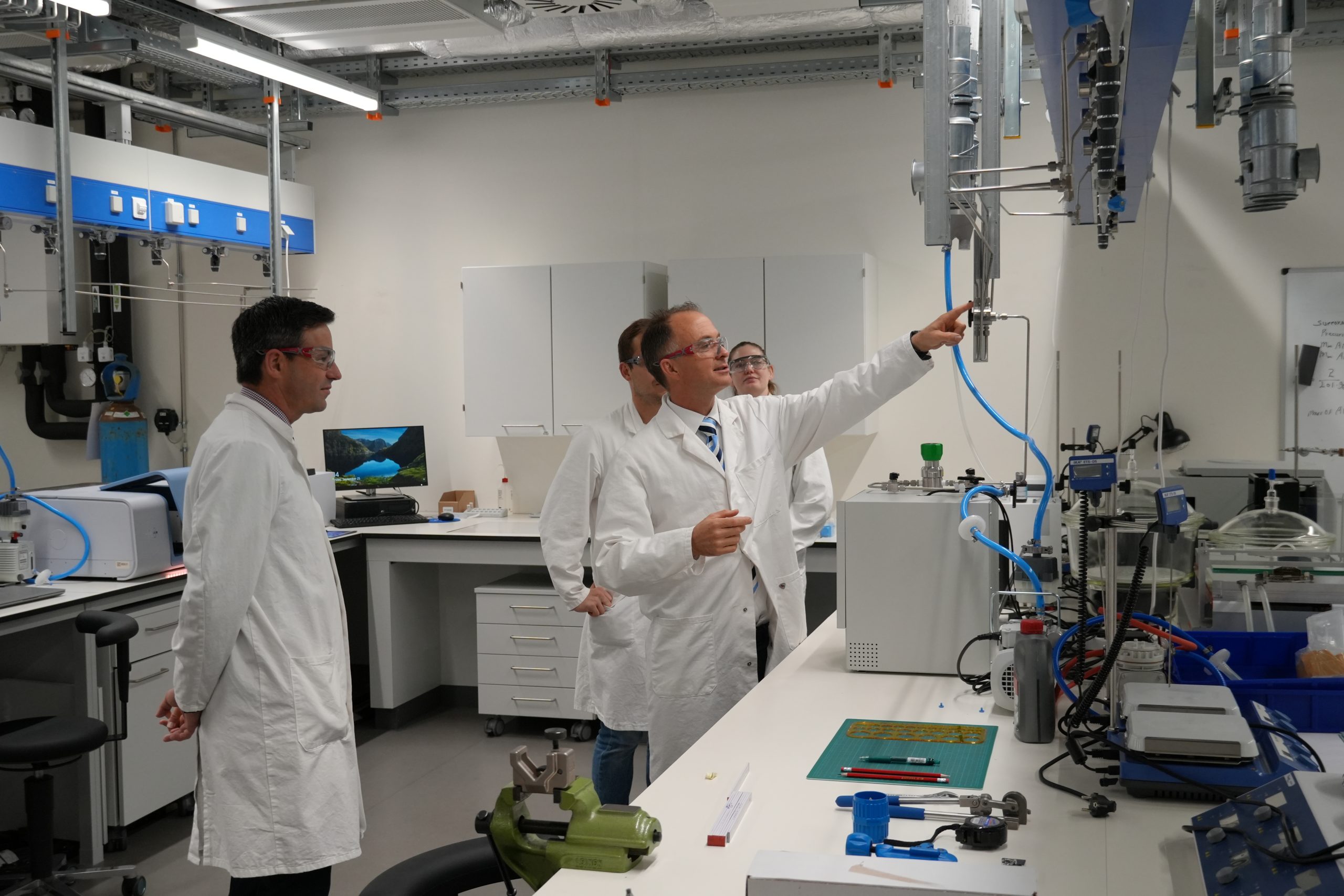Welcome to the Paul Wurth Chair Laboratory
At the University of Luxembourg’s Belval Campus, the PWChair Lab provides a state-of-the-art environment for research in development of novel materials and membranes for gas separation and purification, to catalytic and electrochemical technologies for converting green ammonia into green hydrogen. We also lead major industry collaborations to accelerate the deployment of green hydrogen infrastructure in Luxembourg.
Our laboratory is equipped with advanced analytical instruments, gas-separation rigs, catalytic reactors, and materials characterisation tools that enable reproducible, high-quality research.
Below, you can explore some of the key equipment available in our facility, reflecting the breadth of our experimental capabilities and our commitment to scientific excellence in the energy transition.
Fourier-transform infrared spectroscopy Bruker Invenio S
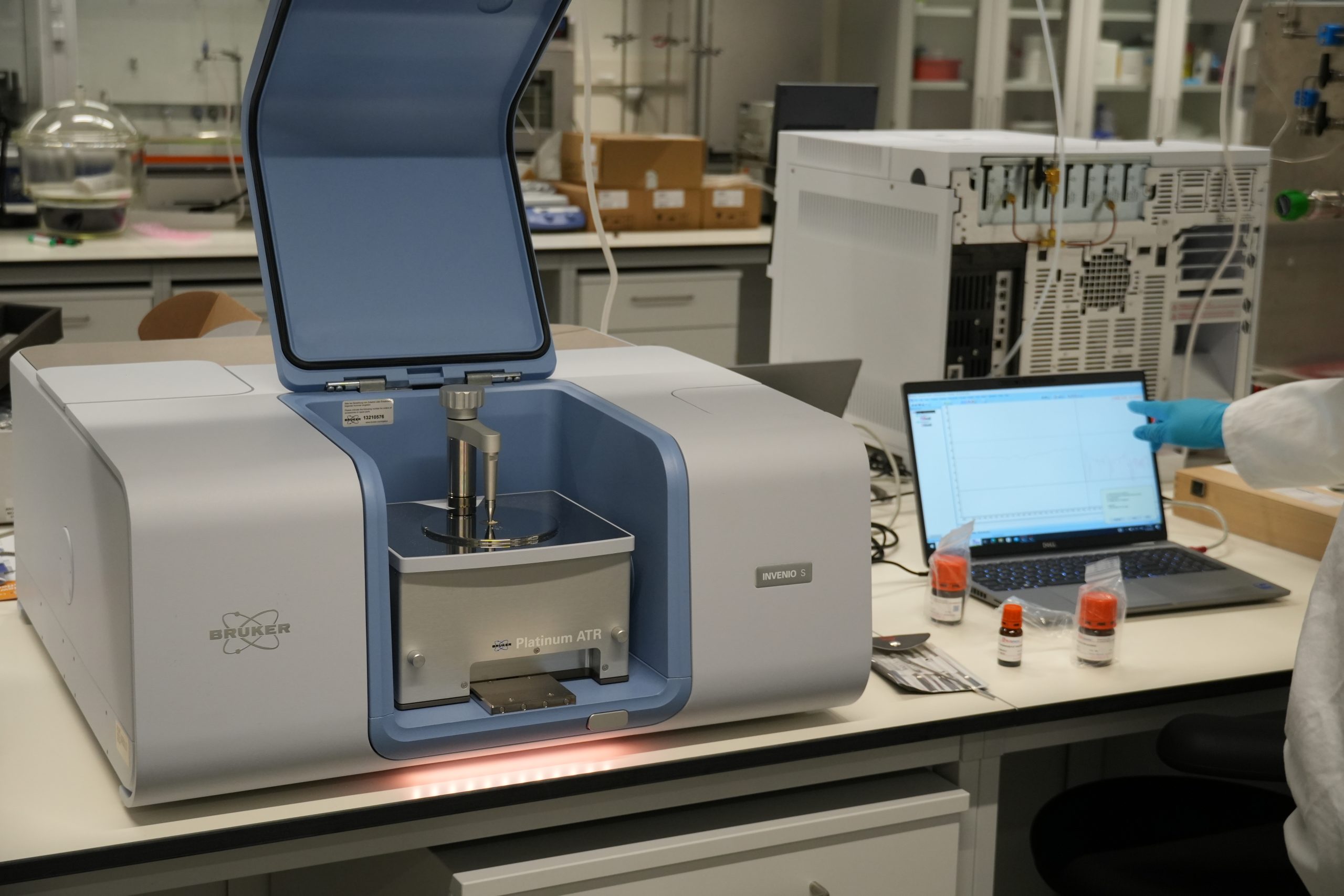
Fourier-transform infrared spectroscopy (FTIR) identifies and characterizes substances by measuring infrared light absorption by molecular vibrations. Using an interferometer and Fourier transform, it generates a unique absorption spectrum for each sample. Widely used in chemistry, biology, and materials science, FTIR provides detailed molecular information with minimal sample preparation.
High pressure Ammonia Decompostion Tabular Reactor
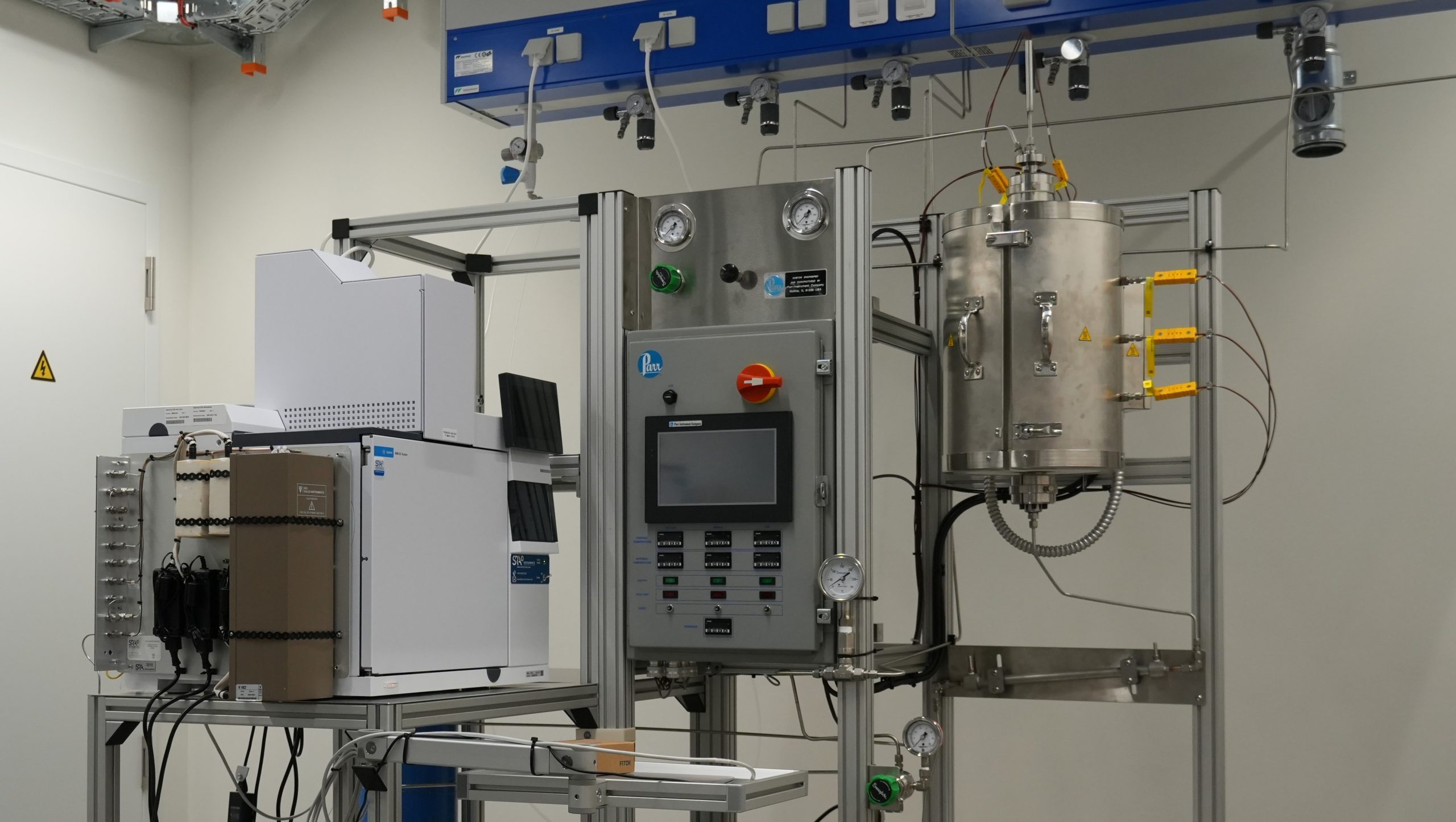
Our high-pressure tubular reactor enables catalytic ammonia decomposition (“ammonia cracking”) to produce hydrogen and nitrogen from NH₃ for lab and pilot scale applications. The stainless-steel reactor inside the tabular furnace ensures packed-bed catalysts, ensuring a stable temperature profile and pressure. The reactor Integrated with thermocouples, back pressure regulator , mass-flow controllers and safety reliefs, provide precise control and data logging at elevated pressures and temperatures. Further, the reactor integrated with Gas Chromatography to detect downstream products (Hydrogen and Nitrogen). Typical reaction: 2 NH₃ → 3 H₂ + N₂. Ideal for research on hydrogen carriers, fuel-cell supply chains and process intensification.
Micromeritics 3Flex and VacPrep 061
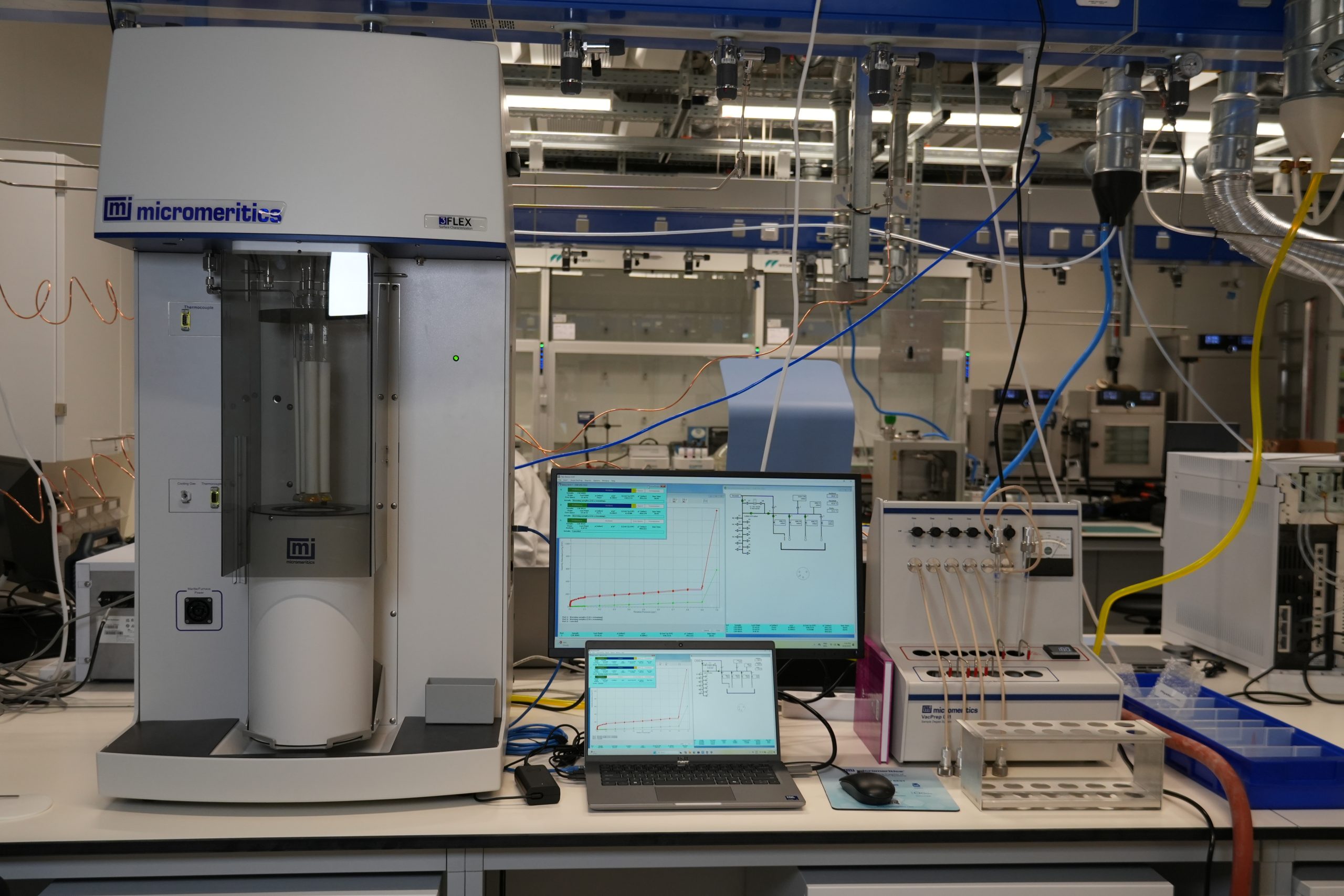
Our Micromeritics 3Flex system is a high-precision gas adsorption analyzer designed to determine surface area, pore size distribution, and adsorption isotherms of porous materials. It operates with up to three analysis ports for simultaneous measurements under controlled temperature and pressure conditions. Using advanced volumetric techniques, it enables accurate characterization of micro- and mesoporous materials, making it essential for catalyst development, adsorbent optimization, and advanced materials research.
Nanotrac Flex and Sabino Zata
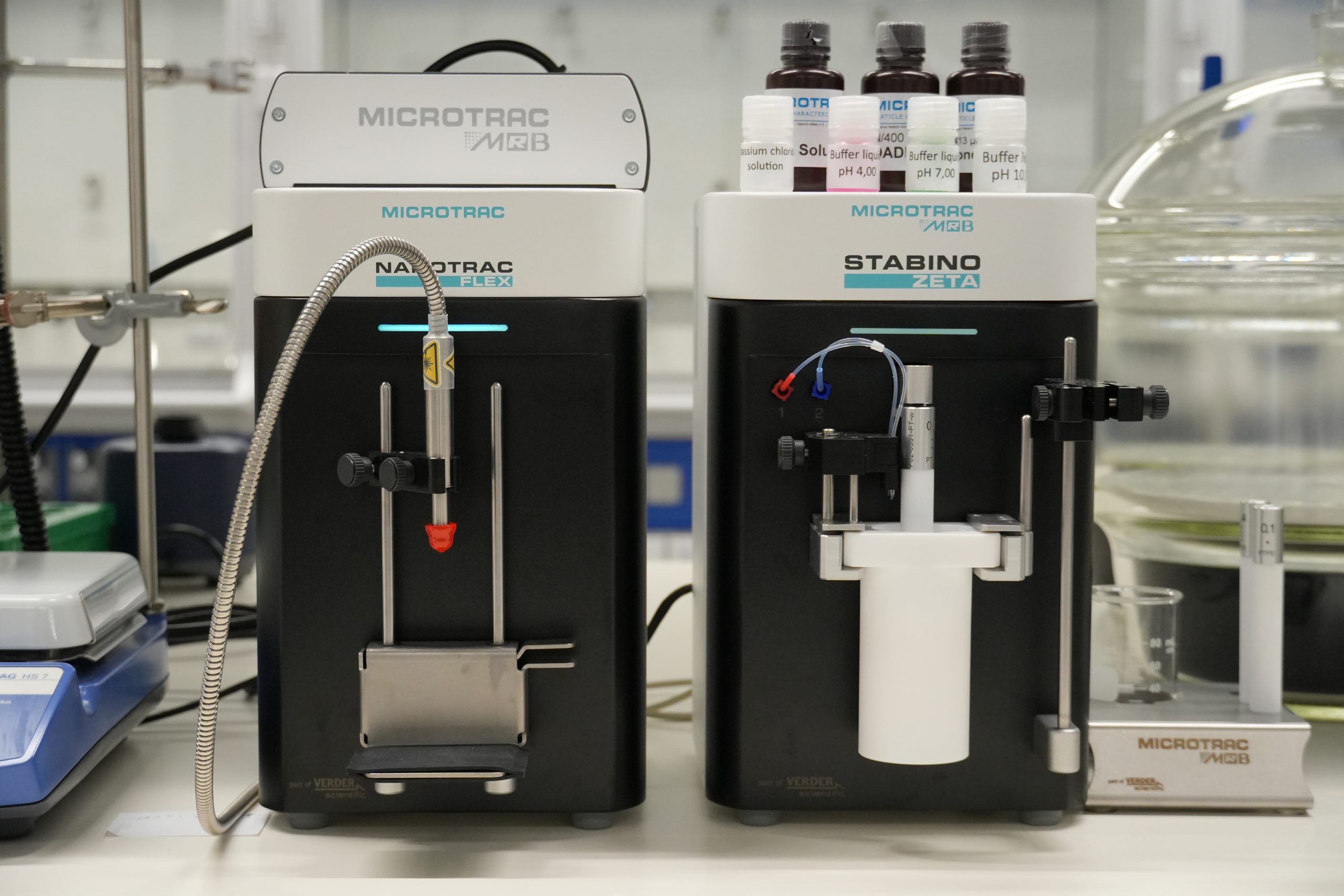
The Nanotrac Flex is a compact, high-performance dynamic light scattering (DLS) system for precise particle size analysis in the nanometer range. Using frequency-shifted backscatter detection, it delivers accurate results even in concentrated or opaque suspensions. Its flexible probe design allows in-situ measurements under real sample conditions, making it ideal for studying colloidal stability, nanoparticle dispersion, and formulation development in research and industrial applications.
The Stabino Zeta is an advanced system for fast and reliable measurement of zeta potential and stability of colloidal suspensions. It operates under real dynamic conditions, providing continuous data during titrations or additive dosing. The instrument combines zeta potential analysis with streaming potential and pH control, enabling detailed investigation of surface charge behavior and dispersion stability, crucial for optimizing formulations in nanomaterials, coatings, and biocolloids research.
Aerosol Generator with diffusional drier and Programmable tube Furnace
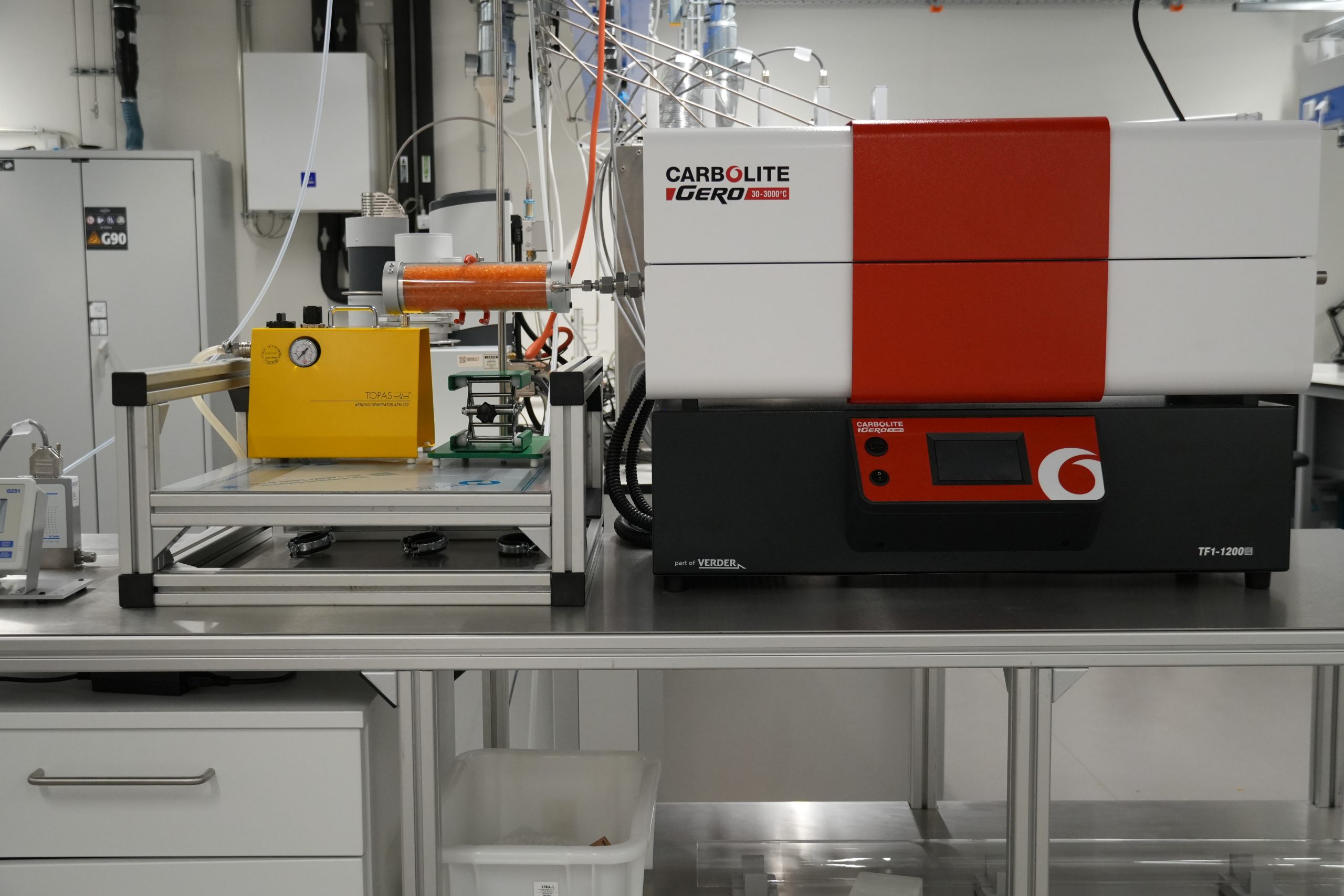
This Experimental setup is for nano catalyst preparation through self assisted aerosol Spray Pyrolysis. Aerosol generator (ATM 2020) produces a controlled aerosol stream that passes through a high-efficiency diffusion dryer to remove moisture without impaction losses. The programmable tube furnace (with precise ramp/soak profiles) enables precursor decomposition, particle sintering and phase change in quartz or stainless tube reactor under defined gas flows. Typical applications include nanoparticle and catalyst synthesis, calcination, coating development, combustion proxy studies, and method validation. Designed for reproducibility, easy maintenance, and safe operation in laboratory settings.
Thermogravimetric analysis NETZSCH STA 449 F5 Jupiter
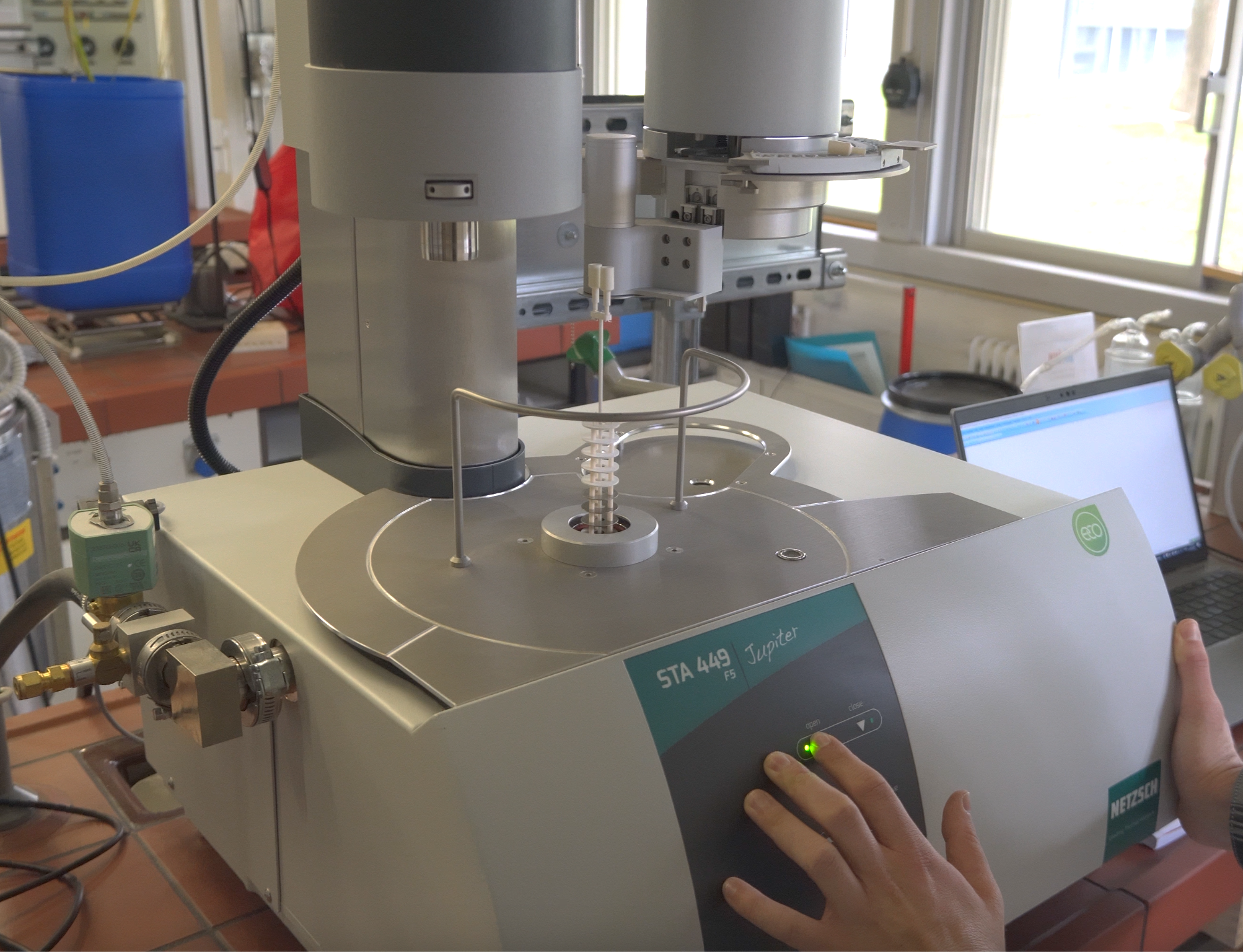
Thermogravimetric analysis (TGA) measures material mass changes with temperature or time under controlled atmospheres. It assesses thermal stability and composition by recording weight variations. TGA data, presented as thermograms, reveal decomposition, oxidation, and moisture loss. Widely used in polymers, pharmaceuticals, and materials science, TGA provides crucial insights into thermal properties and behavior.
Single Gas Rig System for Membrane Gas Separation Characterization
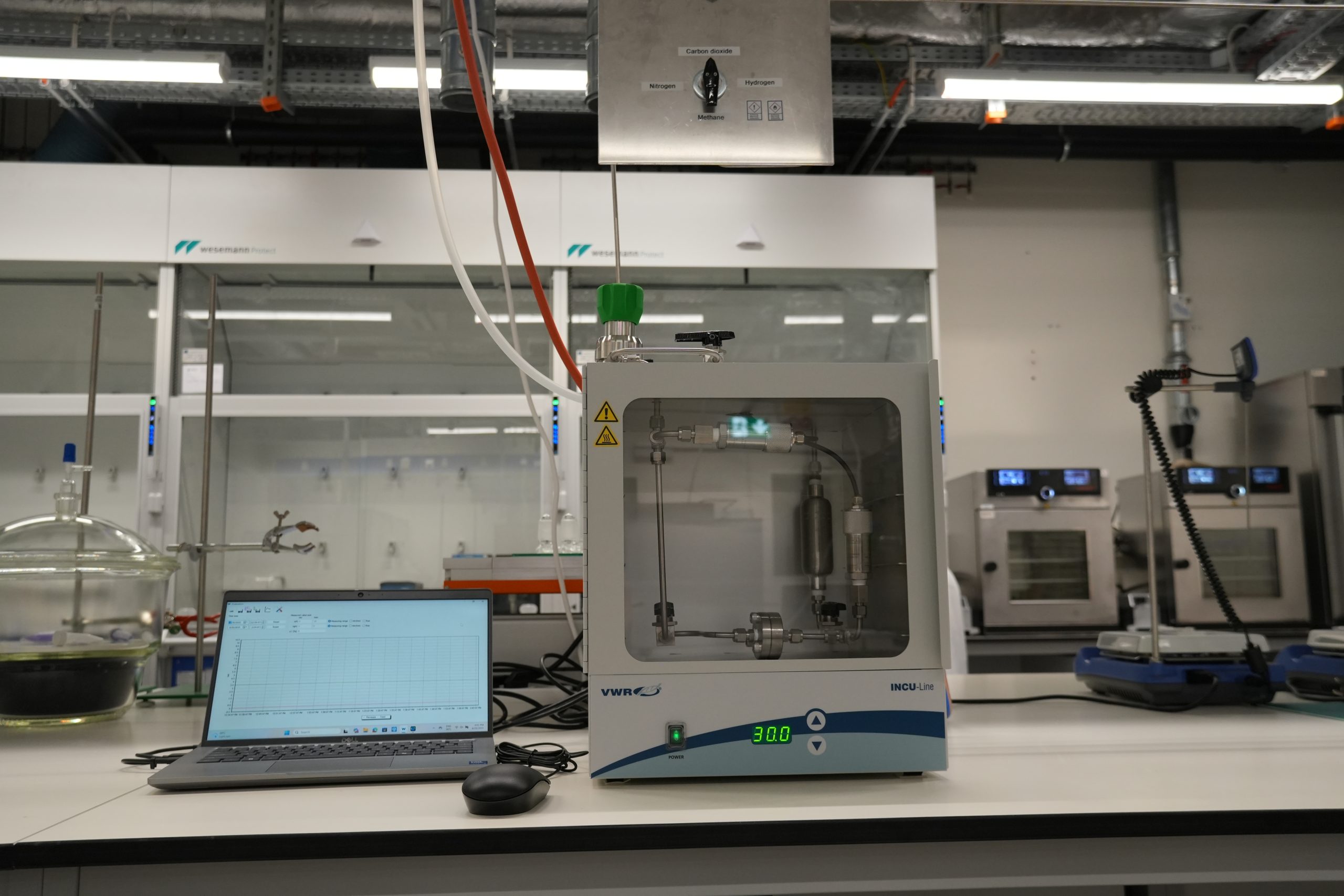
Our custom-built single gas rig is designed to evaluate the gas separation properties of membranes using a constant volume-variable pressure methodology. The system is equipped with two high-precision digital pressure transducers for accurate monitoring of pressure changes during permeation experiments. It supports measurements for four gases: nitrogen (N₂), methane (CH₄), hydrogen (H₂), and carbon dioxide (CO₂).
The rig operates under controlled temperature and atmospheric conditions, ensuring reproducibility and reliability of data. This setup enables precise determination of gas permeability and selectivity, making it ideal for advanced membrane research and development.
Gas Chromatography Agilent 8890 GC
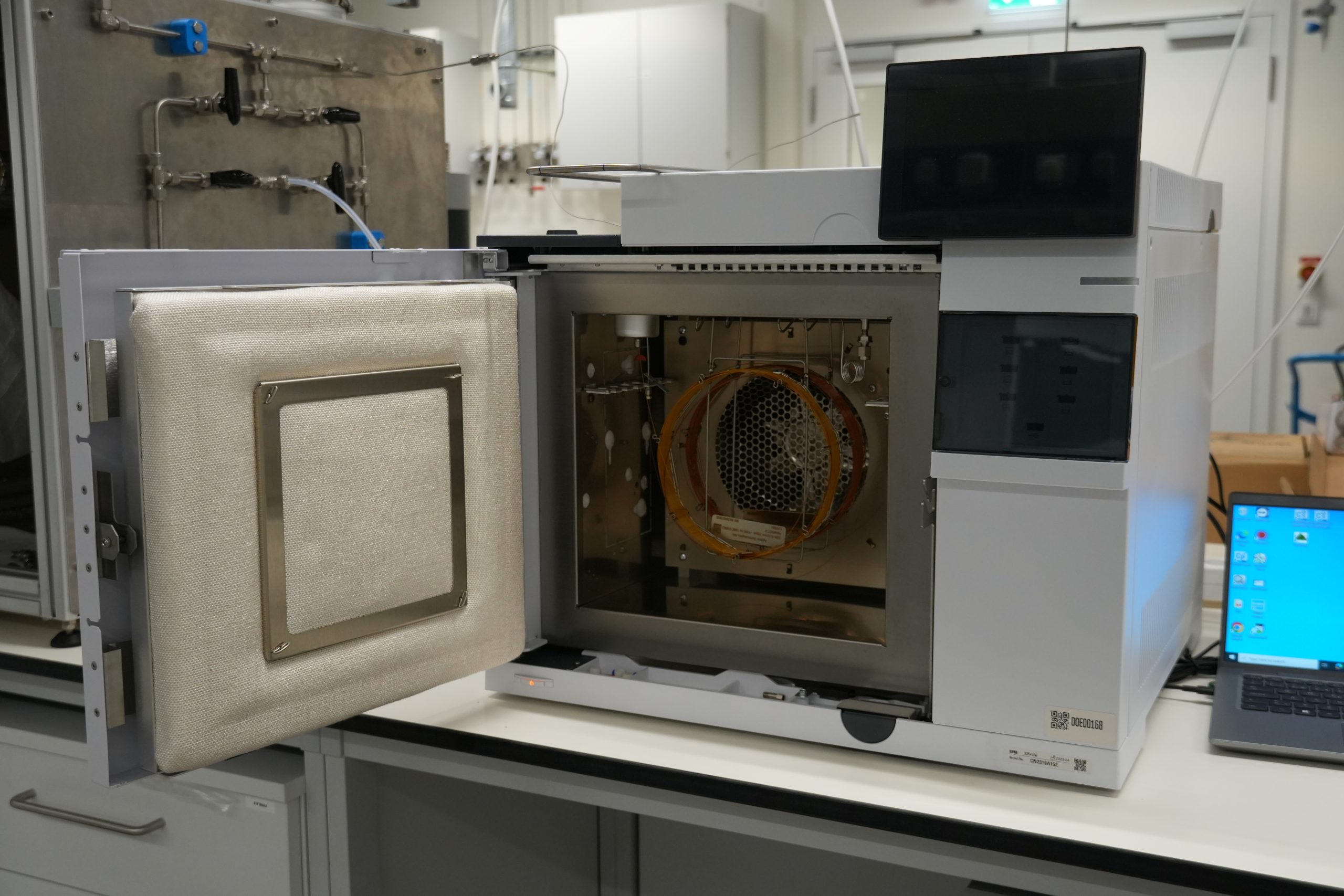
Gas chromatography (GC) separates, identifies, and quantifies compounds in a mixture by vaporizing the sample and passing it through a column with a stationary phase, carried by an inert gas. Detectors like FID and MS generate signals to produce chromatograms. GC is vital in various fields for analyzing volatile and semi-volatile compounds.
Ultraviolet-visible spectroscopy Cary 3500 Compact
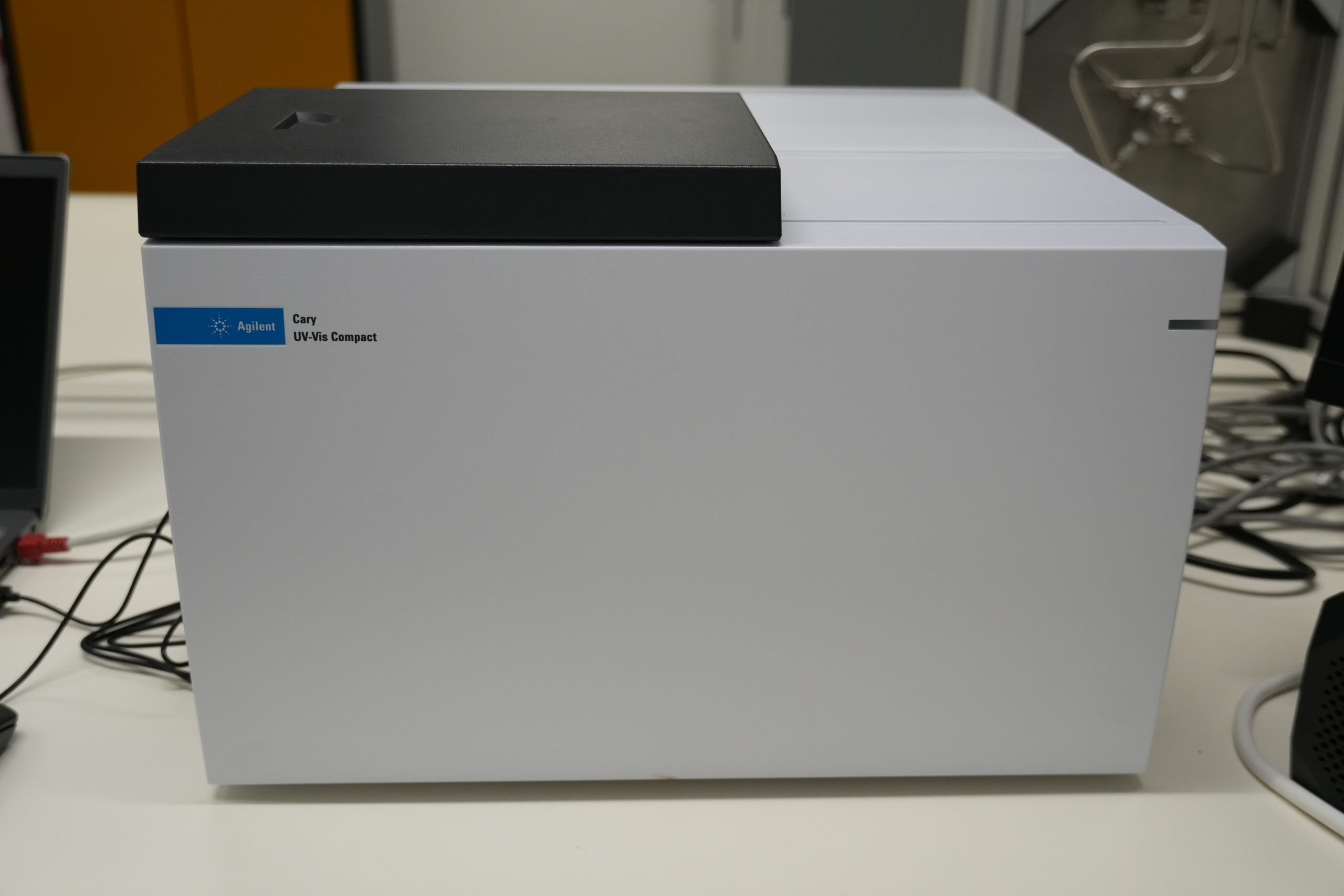
Ultraviolet-visible spectroscopy (UV-Vis) measures light absorption and reflectance in the 200-800 nm range. Molecules absorb light at specific wavelengths, causing electronic transitions. A UV-Vis spectrometer records an absorption spectrum, indicating absorbance versus wavelength. Widely used in chemistry, biology, and environmental science, it quantifies analytes, studies reaction kinetics, and assesses compound purity.
Centrifuge Ohaus
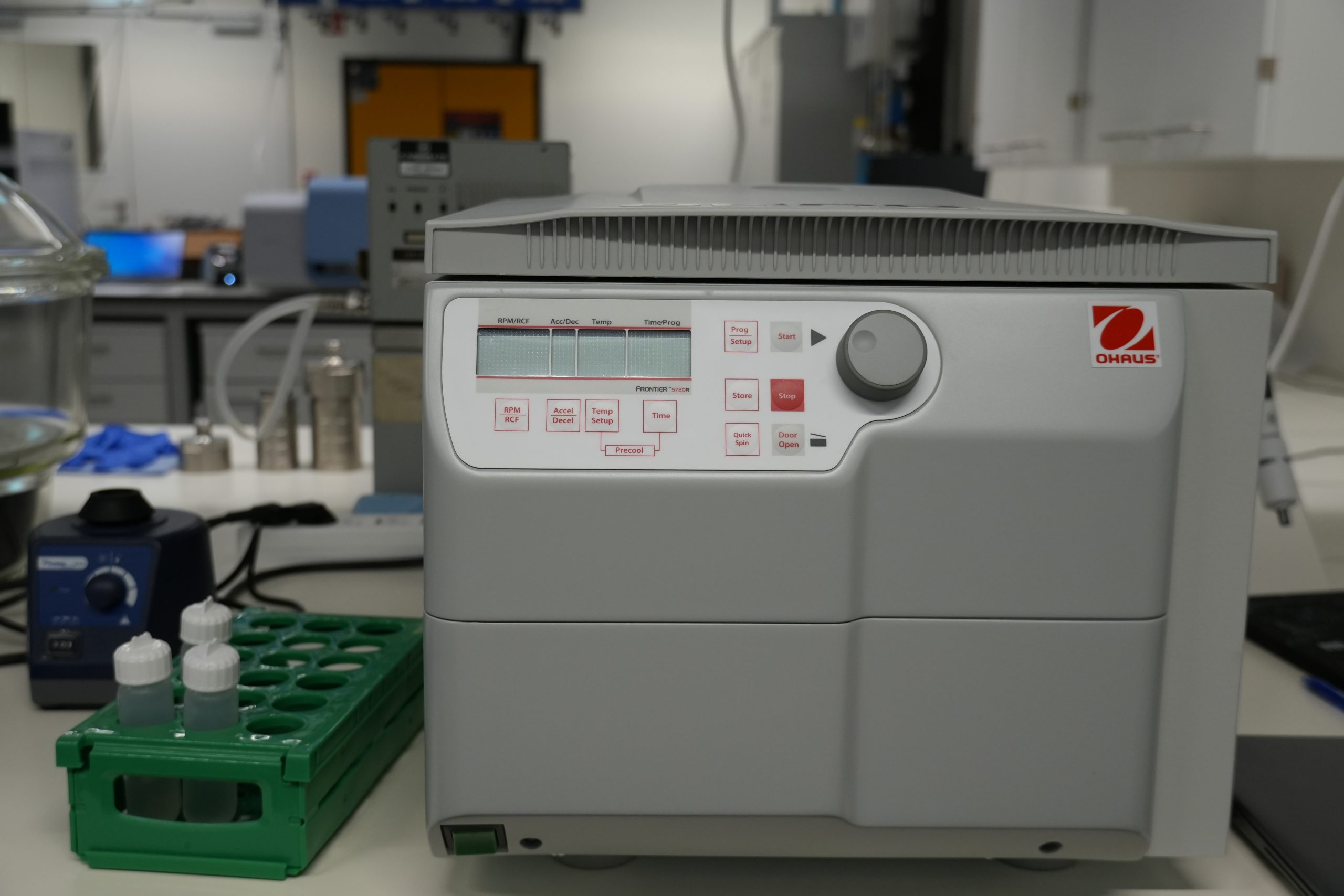
OHAUS benchtop centrifuges support routine for phase separation and method development. Digital control of RCF/RPM and timed runs delivers reproducible precipitate collection and clarification steps for chemical assays. Interchangeable fixed-angle and swing-out rotors accommodate microtubes, and conical tubes, enabling particulate analysis.
Oven Memmert UF160 plus and VO49
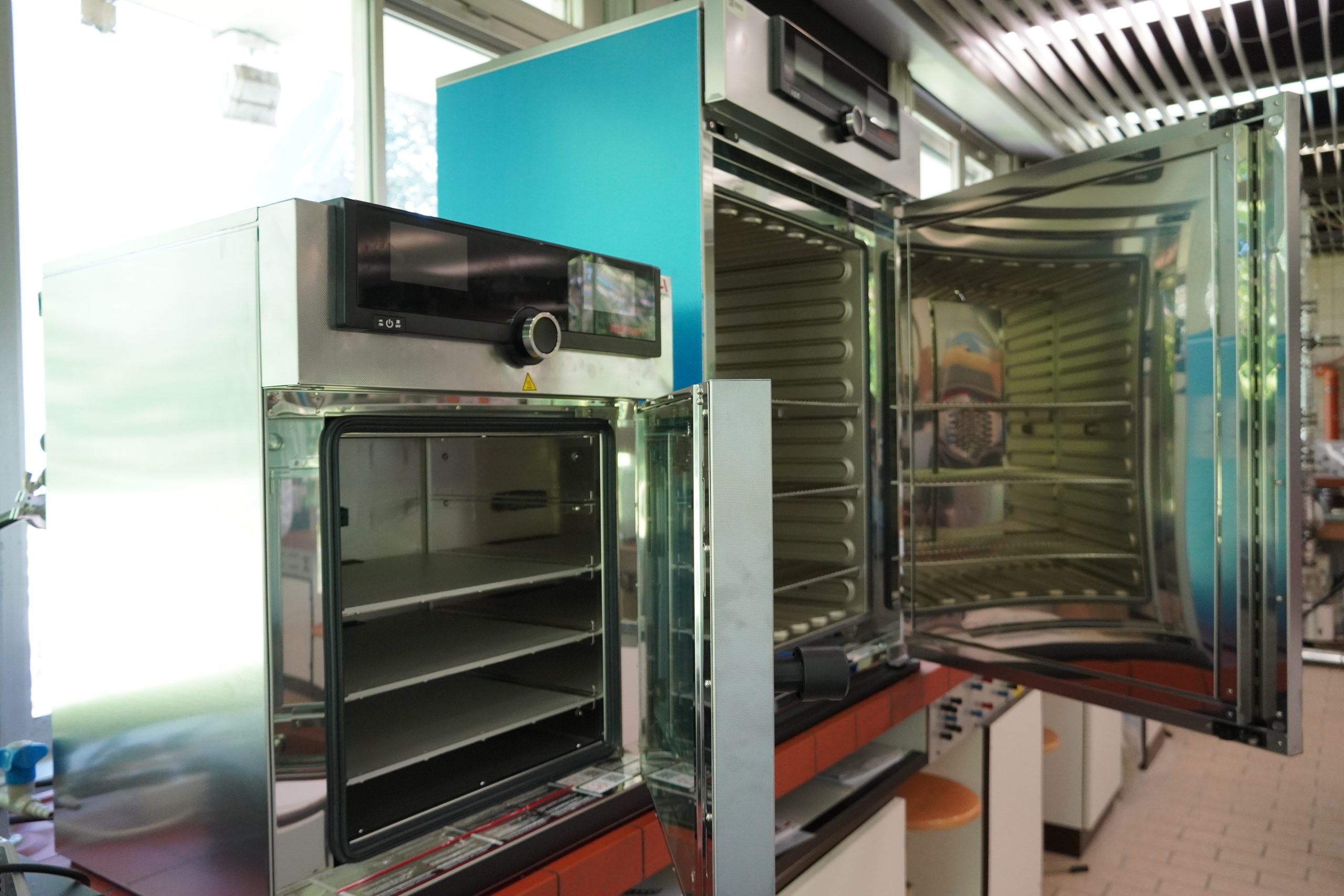
A laboratory or industrial oven provides controlled heating for various purposes, such as drying, curing, annealing, and heat-treating samples. Vacuum ovens, in contrast, operate under reduced pressure, lowering boiling points and allowing processing at lower temperatures, beneficial for heat-sensitive materials. Conventional ovens suit general heating needs, while vacuum ovens are ideal for delicate tasks in industries like pharmaceuticals and electronics.
